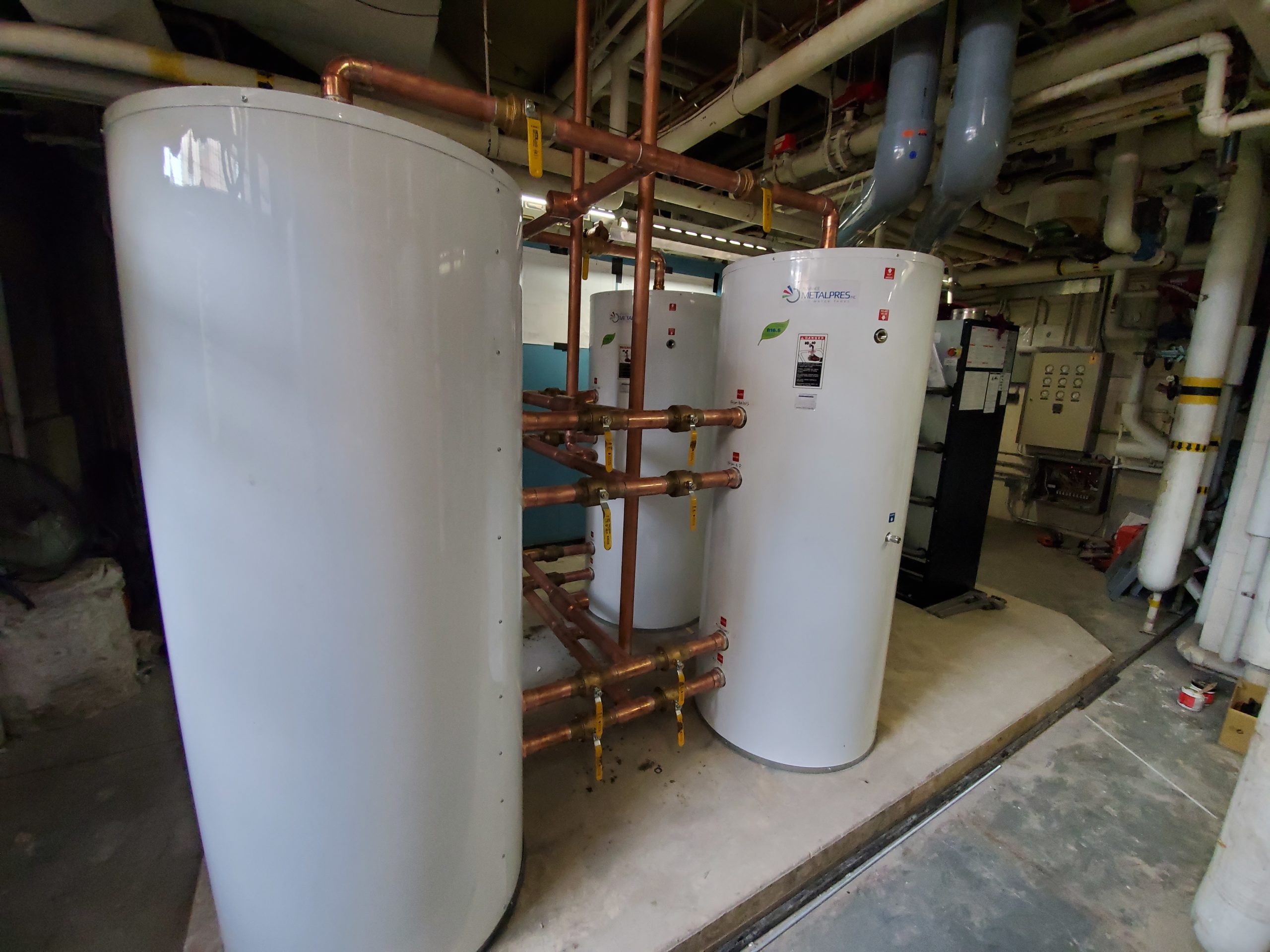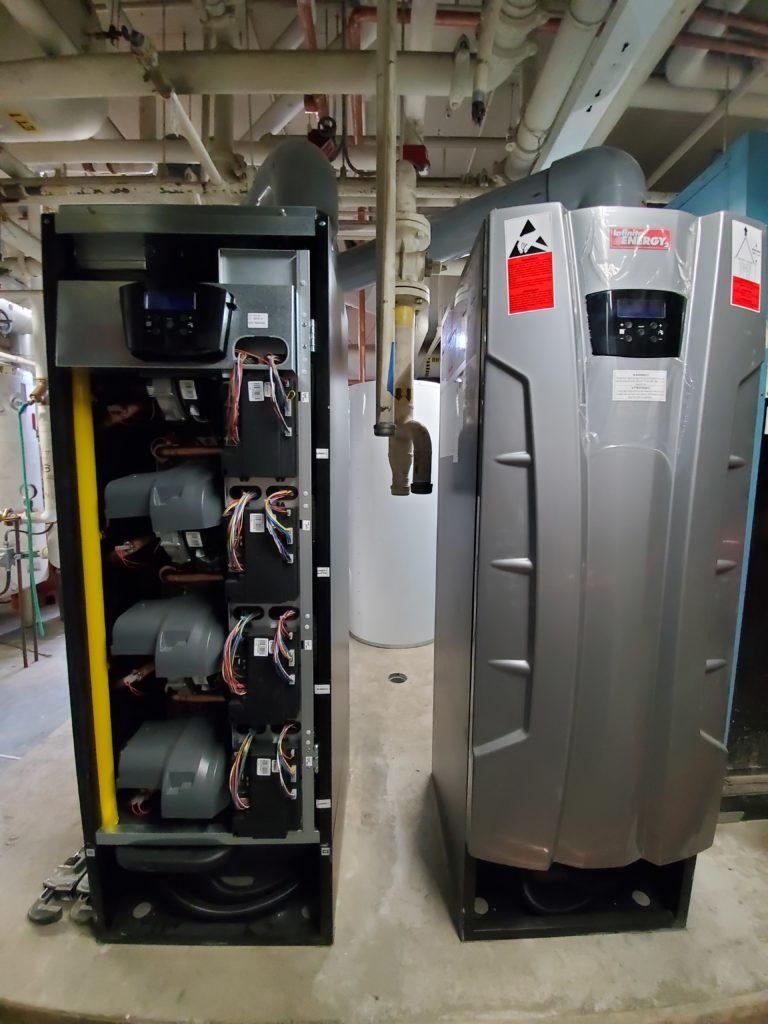
Systems Commissioning: Design is the Easy Part
- The commissioning (Cx) process is critical to ensuring that building systems operate as intended
- It often requires multiple project stakeholders to be present, with each bringing their own specialty focus
- A commissioning authority or prime consultant should set the Cx objectives and direct stakeholders to achieve successful conclusion
The Importance of Commissioning – A Real World Example
The best way to illustrate the importance of systems commissioning is to summarize the scenario our team found on a recent project involving the installation of a new Domestic Hot Water (DHW) heating plant.
Impact Engineering had provided the mechanical design of the new system that included:
- Water to water heat pumps for heat recovery,
- Condensing gas boilers for final stage heating and
- An electronic mixing valve to provide supply water at safe temperatures.
Commissioning this one system, took multiple site visits with various trades professionals and equipment representatives to reach a successful conclusion.
Issues Discovery
During the equipment startup procedure, several issues came to light, including:
- The cold-water makeup to the DHW Mixing valve was receiving hot water from the heat pumps through a cross connection, causing overheating of tempered water.
- Piping to the heat pumps was reversed.
- The control valves spec’d for the heat pumps were not required in this application.
- The condensing boilers were tripping out on low flow and pump overcurrent.
- Pumps were sized just large enough, so balance valves were not required.

A Successful Commissioning Process
The commissioning process can be a bit daunting to engineers as their designs and their knowledge are put to the real-world test. However, there is no better way to learn than to participate in the startup and operation of a new system.
General Steps to a successful commissioning process:
- Establish a commissioning plan or a desired outcome for the system.
- Identify and engage all parties that need to be involved.
- Conduct startup, testing and commissioning procedures on site.
- Document results and go back to #1 if the outcome has not been reached.
In our project example, the parties involved included no less than the following:
Prime Mechanical Consultant, Mechanical Contractor, Water Balancing contractor, Heat Pump Manufacturer’s Startup Rep, Boiler Manufacturer’s Startup Rep, Boiler Manufacturer’s Engineering Rep, Facilities Manager, Maintenance Staff.
Each of these people had a key role to play and provided important information along the way that allowed our team to troubleshoot and solve the issues identified.
The result is a system that is commissioned, operational and that meets design intent.
Lessons Learned
Even a relatively straightforward system can suffer from issues during startup. Without the commissioning process, these hiccups may have continued causing premature equipment failure, poor operation, and energy loss.
When purchasing large, complex equipment such as boilers and heat pumps, startup by trained technicians is either included or required to maintain warranties. Check with the equipment reps to see what is required!
Equipment reps also have a vested interest in ensuring that their products work well given that their reputation is only as good as a few bad installations. They are quite helpful and will organize for engineers and technicians to visit sites to assist in the process.
Document the testing that has occurred on site. Obtain copies of all startup and commissioning reports and take advantage of having experts on site to inquire about the details around equipment maintenance.

Impact Engineering
If you would like to learn more about this journal, or have equipment performance issues you would like to have resolved, please feel free to reach out to our engineering / commissioning team.



